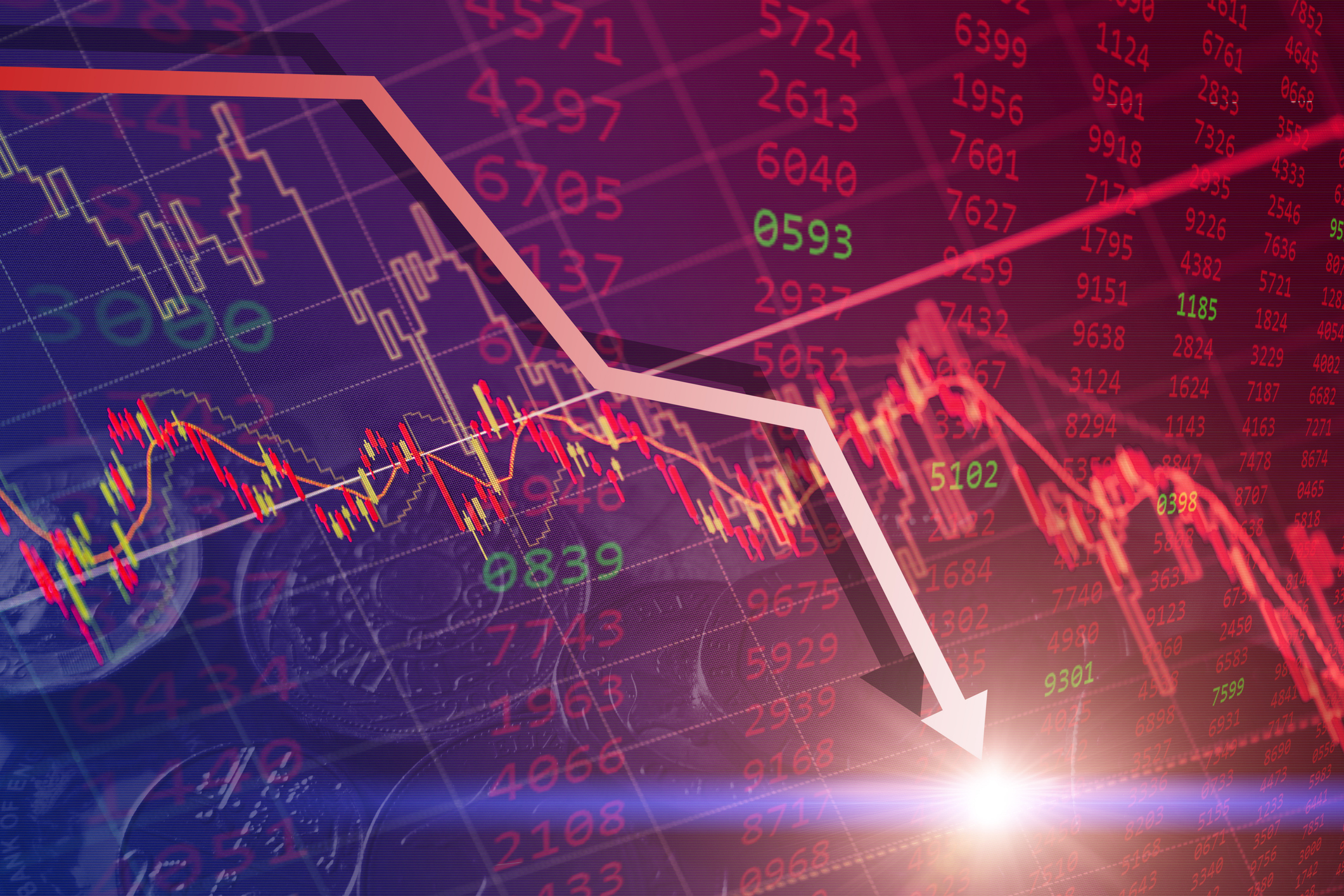The Magic of Moving Averages
This technical indicator can help predict where stocks are headed.

When price charts begin to look like jagged mountain ranges, it can be hard to map out which way stocks are headed. Enter the simple moving average. The tool is a staple of technical analysis—the practice of determining the direction of stock prices based on statistical patterns. It can sharpen the stock market picture, and, although a moving average won’t pinpoint peaks or troughs, it can tell you whether the momentum of a stock or an index is up or down.
A simple moving average is calculated by adding up a stock’s or an index’s daily closing prices over a given period—the most popular periods are 50 days and 200 days—and dividing by the number of days in that period. A moving average “effectively smooths out the noise of daily price swings, so that investors can see which way things are trending,” says William Delwiche, an investment analyst at financial services firm Baird. Moving averages can be superimposed on stock charts on nearly any brokerage website, as well as on free sites, such as Yahoo Finance.
Stock prices that diverge from the prevailing trend of a moving average can be a signal to buy or sell—or at least to become more bullish or bearish. When a stock’s price falls below its moving average, it’s considered a sign of a weakening trend and indicates heightened risk and uncertainty, says Mark Dodson, research director at investment management firm Cypress Capital. “Adopting a simple rule, such as not buying a stock until its price rises above its 50- or 200-day moving average, can help you avoid riding a company to the bottom,” he says.
From just $107.88 $24.99 for Kiplinger Personal Finance
Become a smarter, better informed investor. Subscribe from just $107.88 $24.99, plus get up to 4 Special Issues

Sign up for Kiplinger’s Free Newsletters
Profit and prosper with the best of expert advice on investing, taxes, retirement, personal finance and more - straight to your e-mail.
Profit and prosper with the best of expert advice - straight to your e-mail.

When a price rises above the moving average, investors should be more risk-tolerant and aggressive, Dodson adds. For example, Facebook’s 50-day moving average may be signaling better days ahead for the beleaguered social media stock. The stock has surrendered 18% since falling below its 50-day moving average last July, but it began trading above its average in early January. (Returns and other data in this story are through January 11.)
Crossed signals. More-advanced technical analysis focuses on the interaction between longer- and shorter-term moving averages. During a healthy bull market, for example, both the 50-day moving average and the 200-day moving average would be headed in the same direction, with the 50-day average higher than the 200-day indicator.
But when a 50-day moving average dips below an investment’s 200-day average, it results in a scary-sounding red flag: the “death cross.” That’s what happened with Standard & Poor’s 500-stock index in early December. The death cross is a “definite sell signal,” says Louise Yamada, author of the newsletter TechPoints, as it indicates that a short-term pullback may be devolving into a long-term downturn. The inverse, the “golden cross,” is considered a buy signal.
But the death cross is far from being a perfect indicator of prolonged market slides. Although the S&P 500 came perilously close to a bear market in late December, it has since turned around, so it remains to be seen whether the most recent instance was prescient or a false alarm. Though a cross in December 2007 presaged the worst of the ’07–’09 bear market, crosses in 2011 and 2015 signaled market slides that never became full-fledged bears.
For fundamentals-based investors—those who rely on data such as corporate earnings and economic growth—poring over stock charts can seem like reading tea leaves. But technical signals can be a valuable tool to get a sense of the market’s underlying trends, as long as investors understand that they’re only part of a larger toolbox, says Delwiche. “Don’t try to turn these signals into foolproof market-timing devices,” he says.
Profit and prosper with the best of Kiplinger's advice on investing, taxes, retirement, personal finance and much more. Delivered daily. Enter your email in the box and click Sign Me Up.

Ryan joined Kiplinger in the fall of 2013. He wrote and fact-checked stories that appeared in Kiplinger's Personal Finance magazine and on Kiplinger.com. He previously interned for the CBS Evening News investigative team and worked as a copy editor and features columnist at the GW Hatchet. He holds a BA in English and creative writing from George Washington University.
-
 'Humbug!' Say Consumers, Despite Hot GDP: Stock Market Today
'Humbug!' Say Consumers, Despite Hot GDP: Stock Market Today"The stock market is not the economy," they say, but both things are up. Yet one survey says people are still feeling down in the middle of this complex season.
-
 The SEC Is Concerned for Older Investors and Retirement Savers. Here's What You Should Know
The SEC Is Concerned for Older Investors and Retirement Savers. Here's What You Should KnowThe SEC focusing on older investors, retirement and college savers, and private securities. Here's how those changes impact you.
-
 Vesting, Catch-Ups and Roths: The 401(k) Knowledge Quiz
Vesting, Catch-Ups and Roths: The 401(k) Knowledge QuizQuiz Test your understanding of key 401(k) concepts with our quick quiz.
-
 'Humbug!' Say Consumers, Despite Hot GDP: Stock Market Today
'Humbug!' Say Consumers, Despite Hot GDP: Stock Market Today"The stock market is not the economy," they say, but both things are up. Yet one survey says people are still feeling down in the middle of this complex season.
-
 Stocks Rise to the Spirit of the Season: Stock Market Today
Stocks Rise to the Spirit of the Season: Stock Market TodayInvestors, traders and speculators are beginning to like the looks of a potential year-end rally.
-
 Nasdaq Leads as Tech Stages Late-Week Comeback: Stock Market Today
Nasdaq Leads as Tech Stages Late-Week Comeback: Stock Market TodayOracle stock boosted the tech sector on Friday after the company became co-owner of TikTok's U.S. operations.
-
 Cooler Inflation Supports a Relief Rally: Stock Market Today
Cooler Inflation Supports a Relief Rally: Stock Market TodayInvestors, traders and speculators welcome much-better-than-hoped-for core CPI data on top of optimism-renewing AI earnings.
-
 Nasdaq Sinks 418 Points as Tech Chills: Stock Market Today
Nasdaq Sinks 418 Points as Tech Chills: Stock Market TodayInvestors, traders and speculators are growing cooler to the AI revolution as winter approaches.
-
 Stocks Chop as the Unemployment Rate Jumps: Stock Market Today
Stocks Chop as the Unemployment Rate Jumps: Stock Market TodayNovember job growth was stronger than expected, but sharp losses in October and a rising unemployment rate are worrying market participants.
-
 Stocks Struggle Ahead of November Jobs Report: Stock Market Today
Stocks Struggle Ahead of November Jobs Report: Stock Market TodayOracle and Broadcom continued to fall, while market participants looked ahead to Tuesday's jobs report.
-
 AI Stocks Lead Nasdaq's 398-Point Nosedive: Stock Market Today
AI Stocks Lead Nasdaq's 398-Point Nosedive: Stock Market TodayThe major stock market indexes do not yet reflect the bullish tendencies of sector rotation and broadening participation.